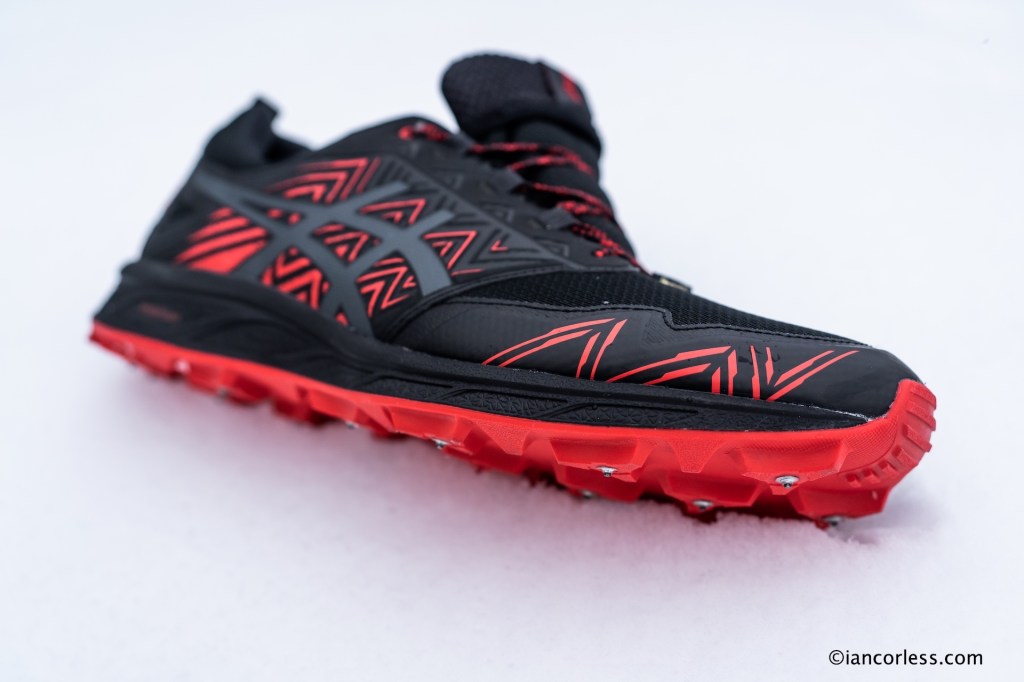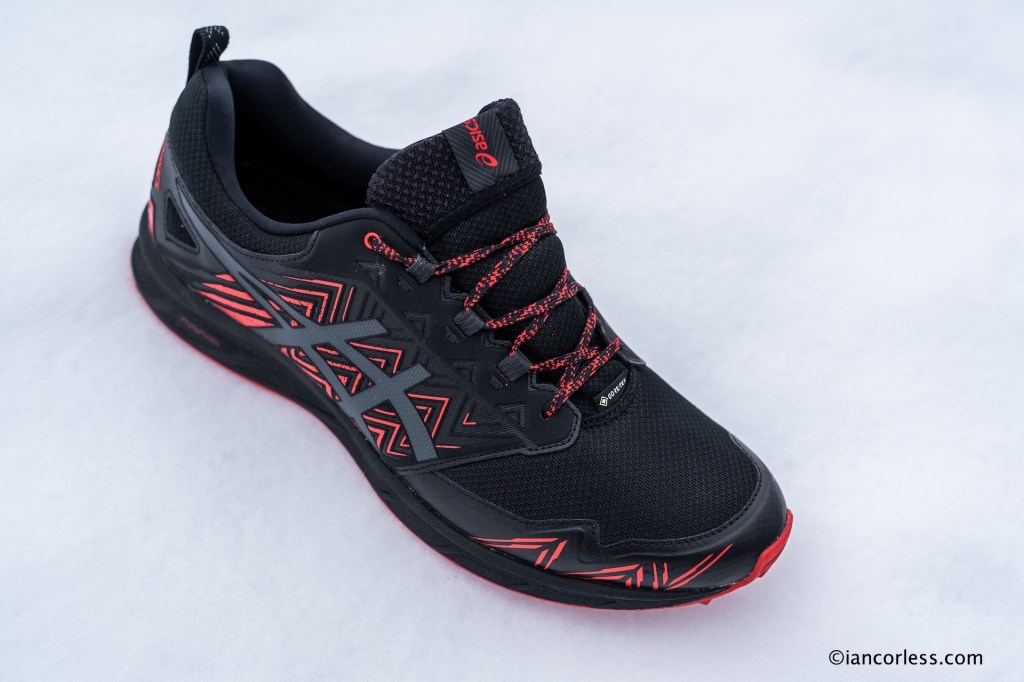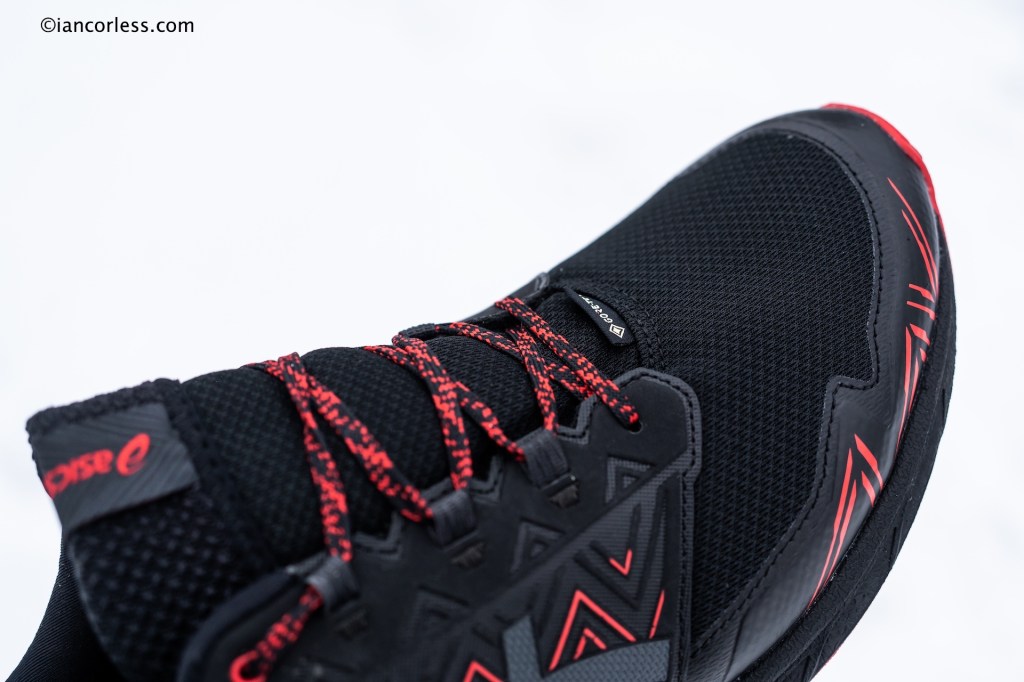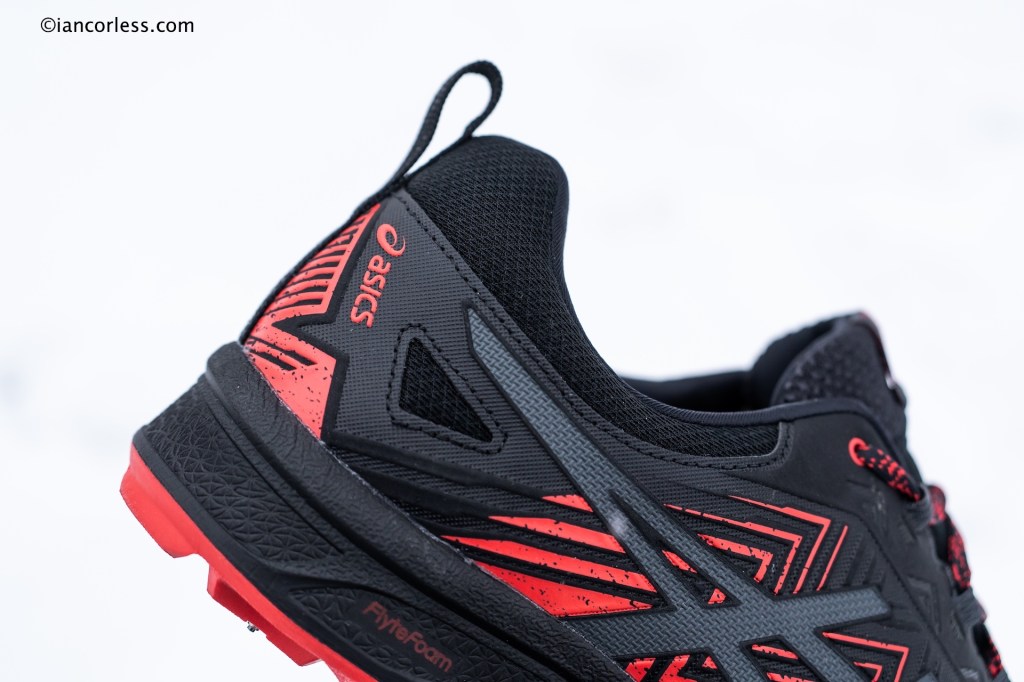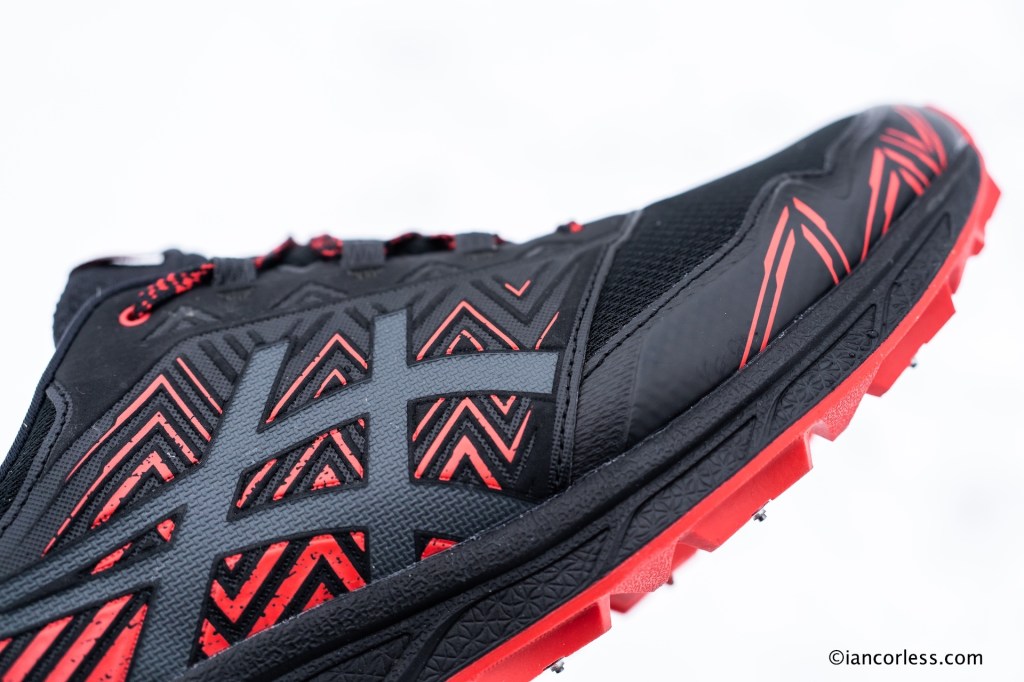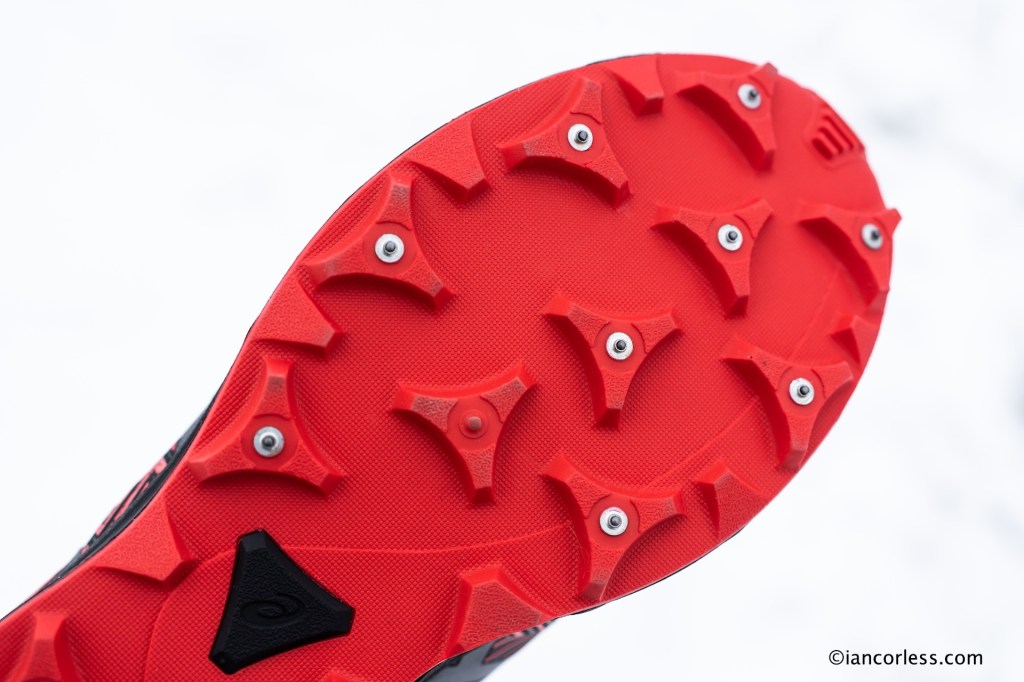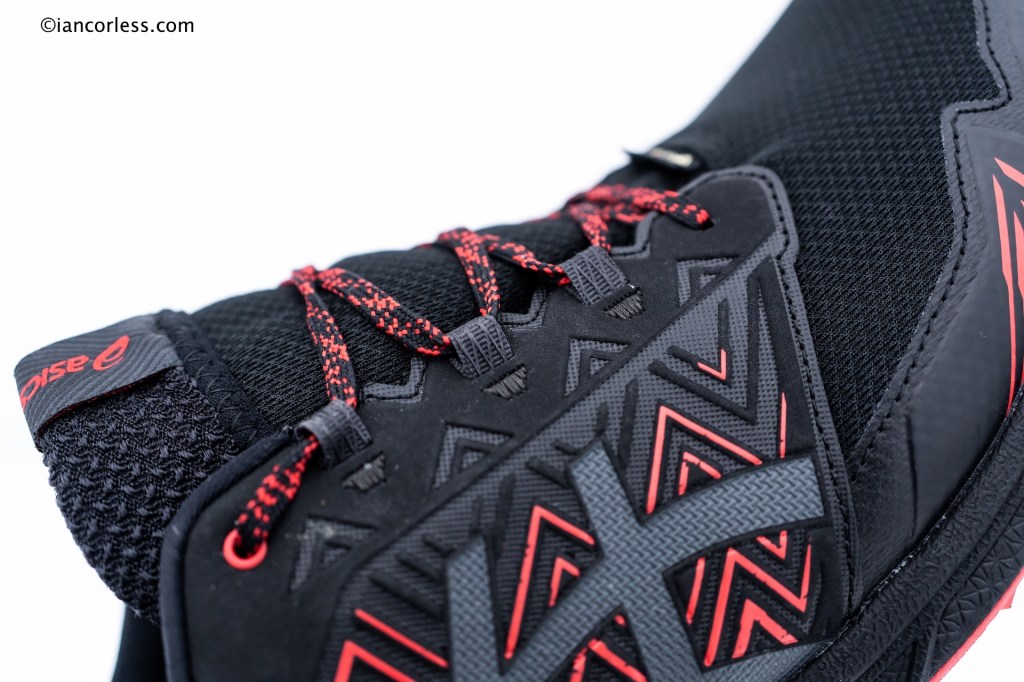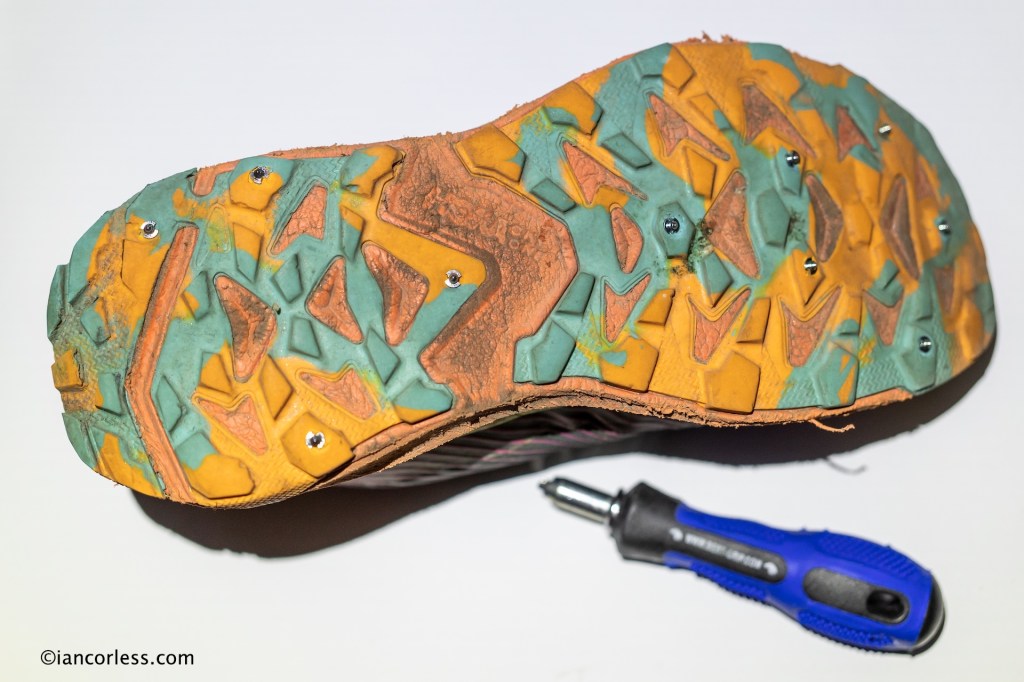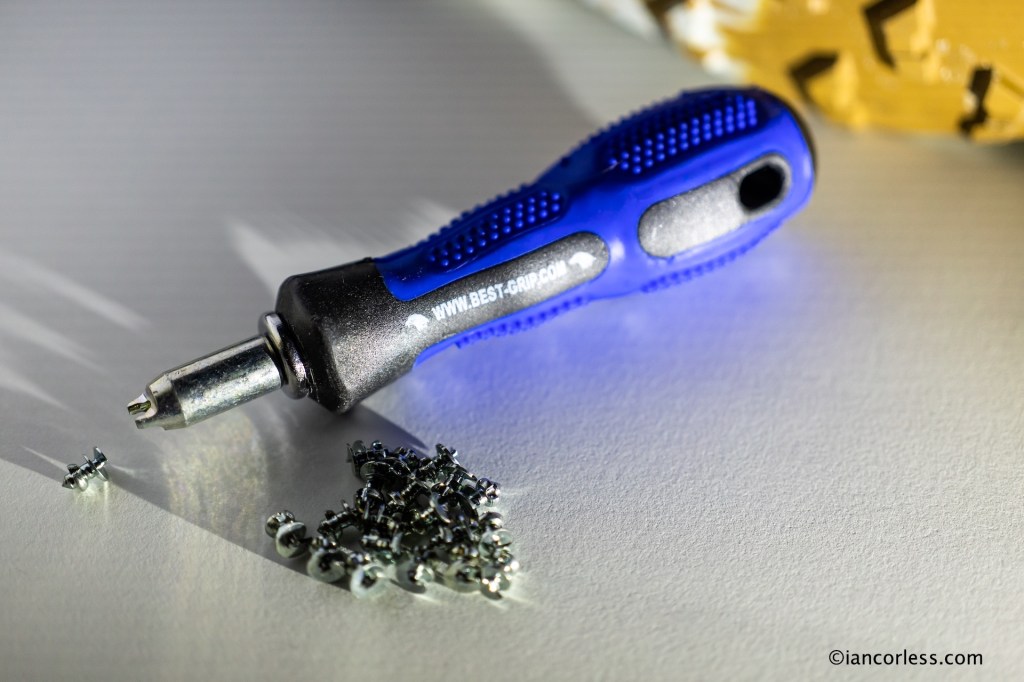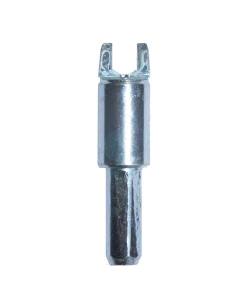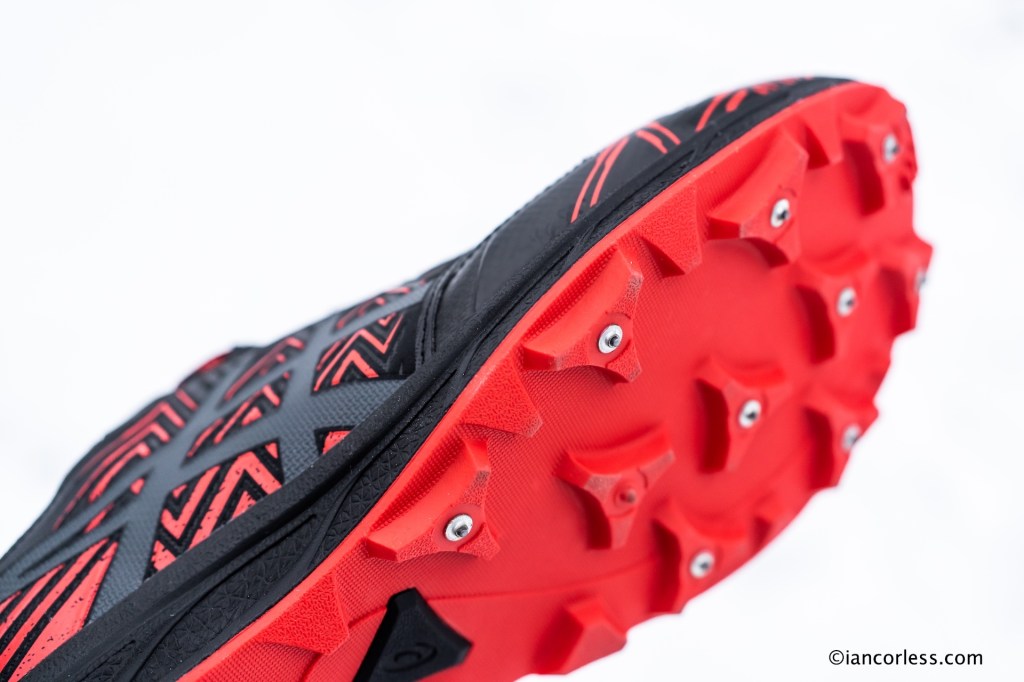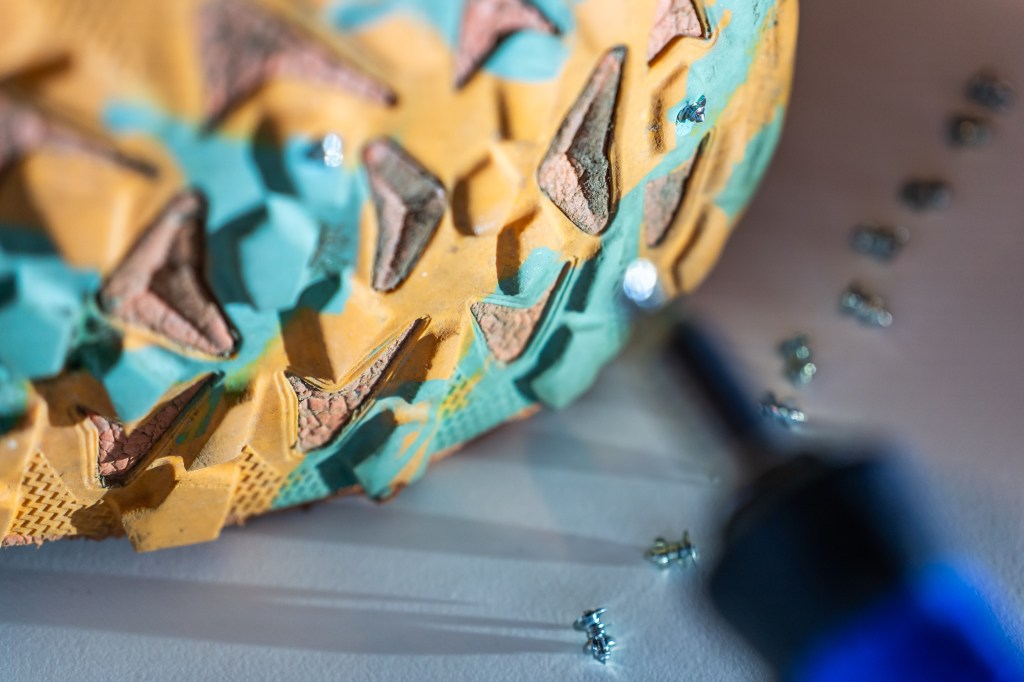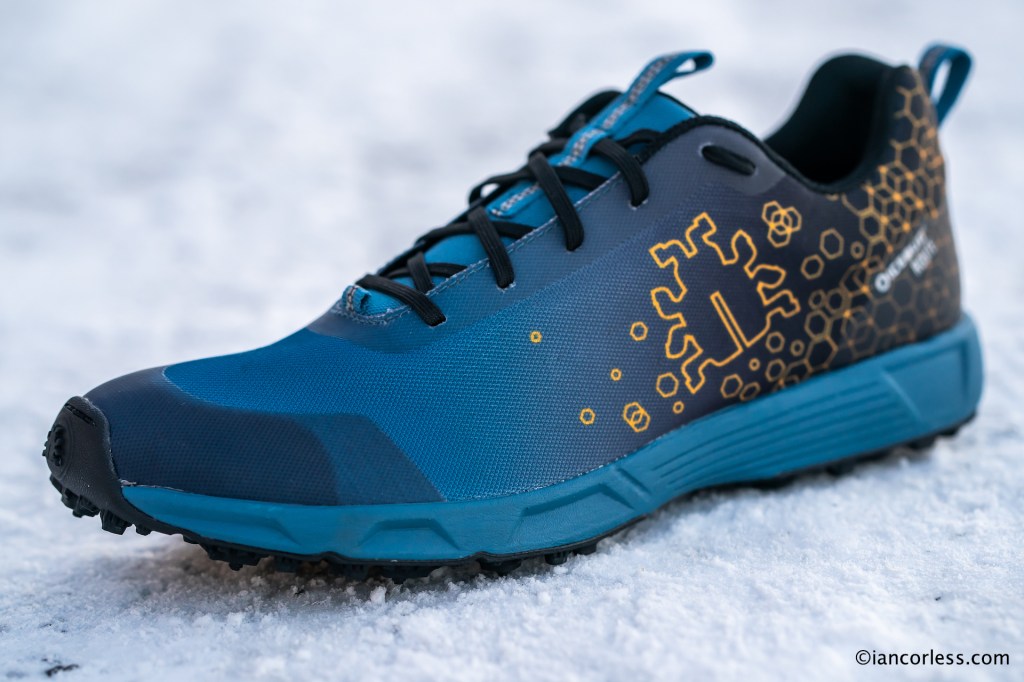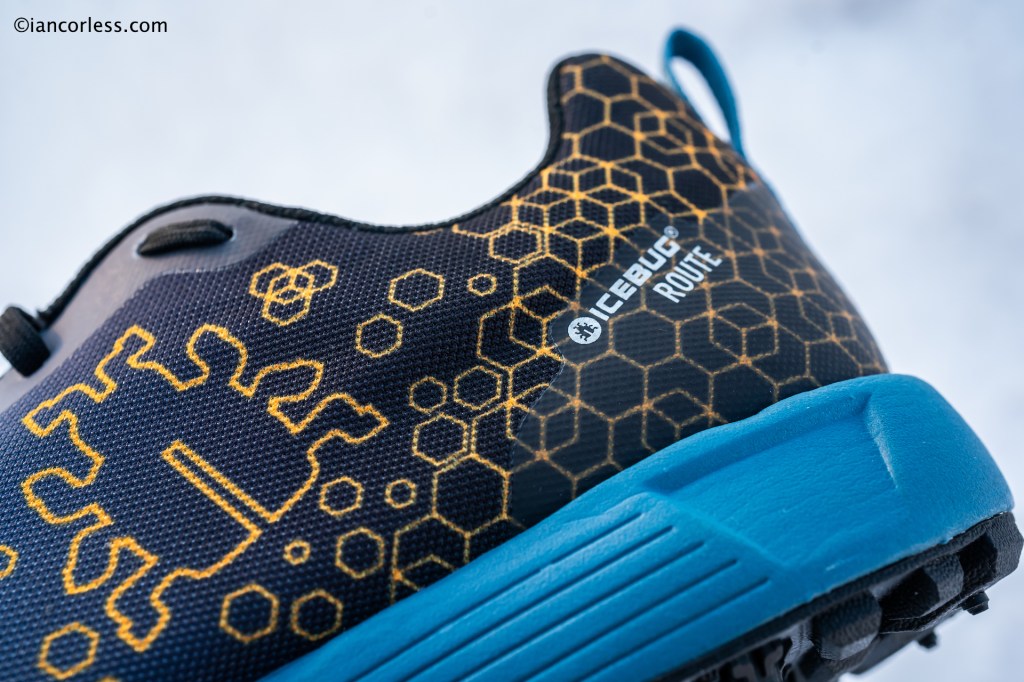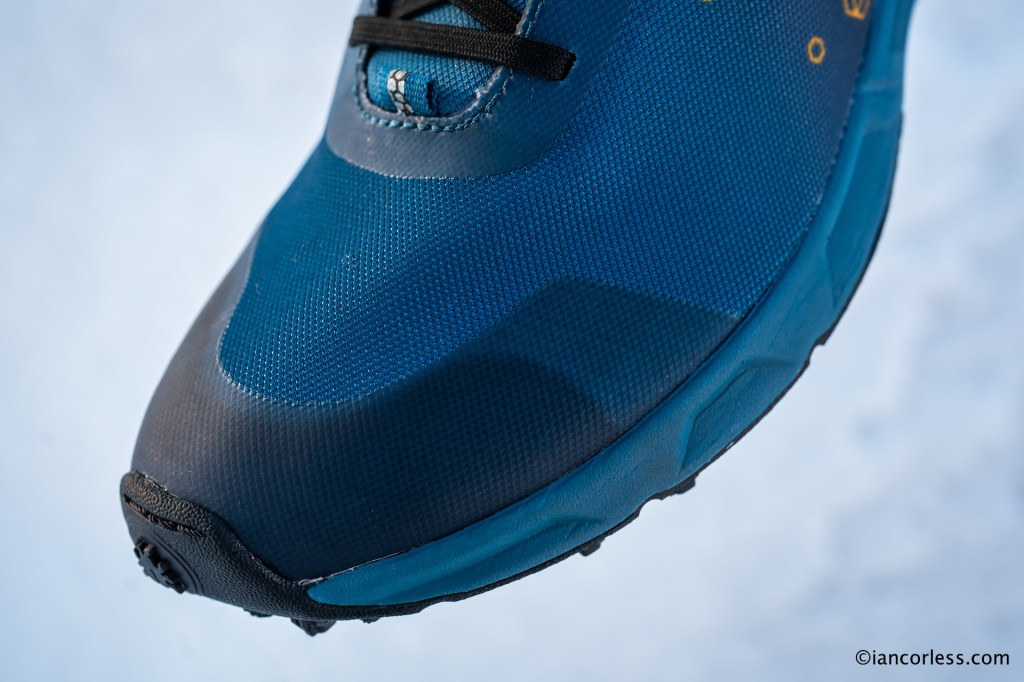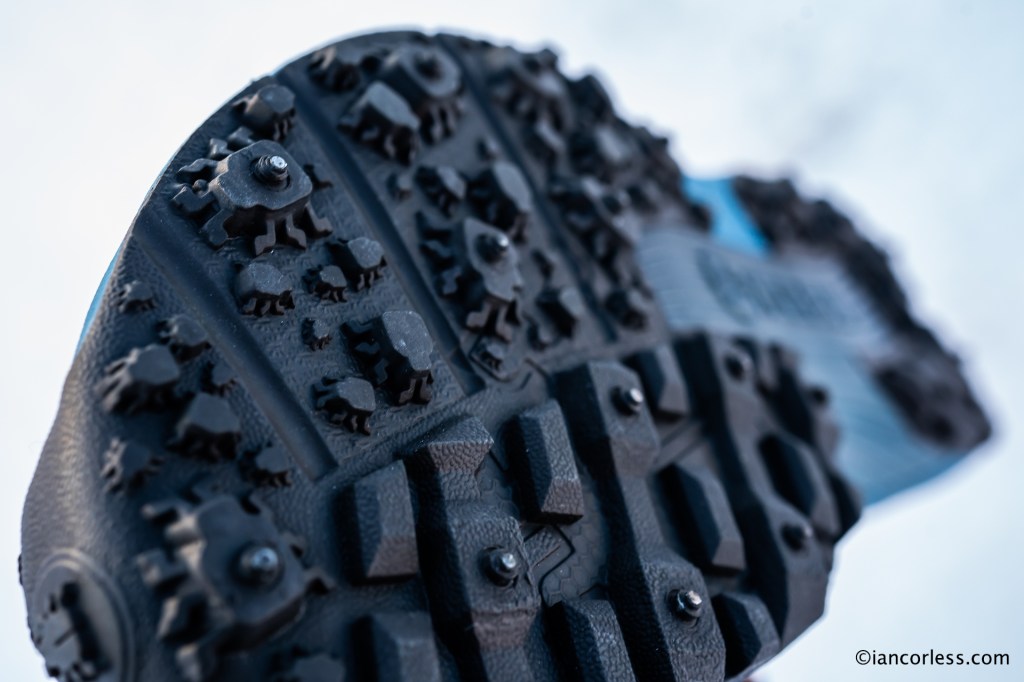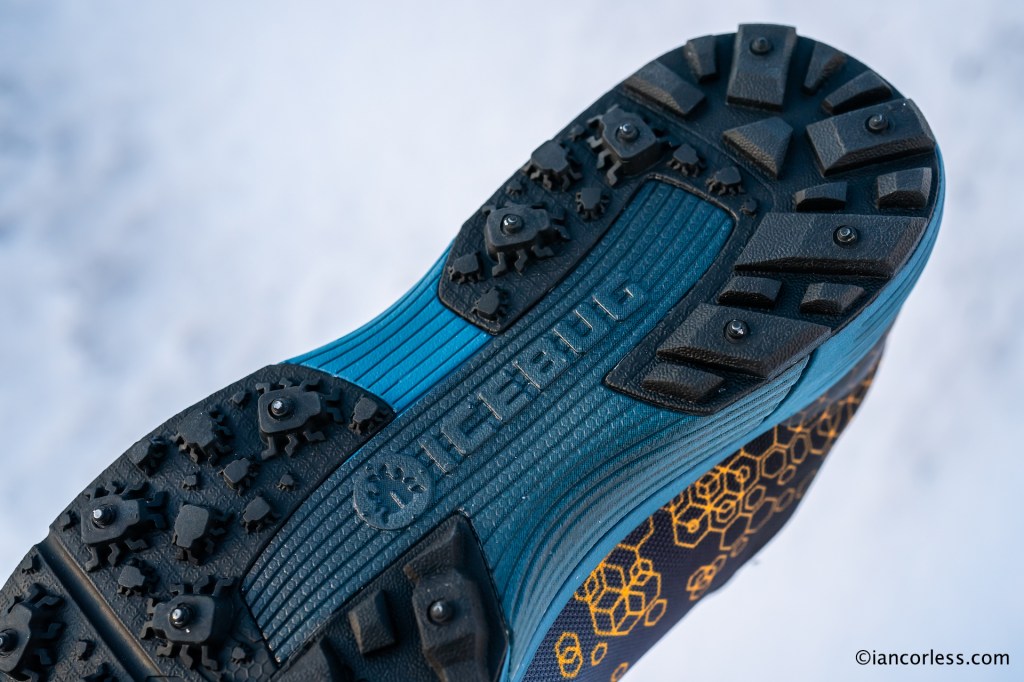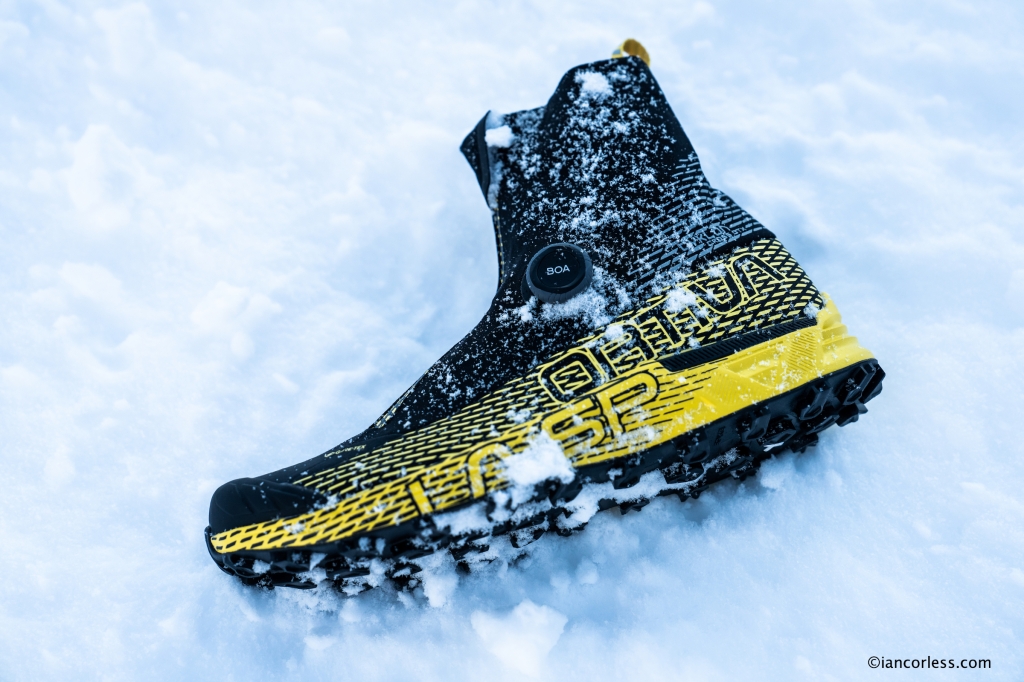
The La Sportiva Cyklon with BOA® Fit System was a revelation on its release and without a doubt, it has been a perfect shoe for mountain adventures in challenging terrain. On first impressions, the Cyklon could almost have been mistaken for a lightweight boot due to the built in sock-liner which comes higher up the leg, to ankle height which has two purposes: 1. It keeps out debris from entering the shoe. 2. It provides additional support.
The CYKLON is a unique shoe in that it almost occupied its own category, a crossover between mountain running shoe and boot. IT excelled in challenging terrain with incredible foot hold, protection and a great outsole. Standout features were the sock-like fit in conjunction with the BOA/ Dynamic Cage which provided me with arguably one of the most secure footholds I have experienced.
Now, La Sportiva have stepped up the game with the recent release of the Cyklon Cross GTX. Living in Norway, this has been one of my ‘go-to’ shoe throughout the winter months when snow and ice have been my ‘normal’ running conditions.
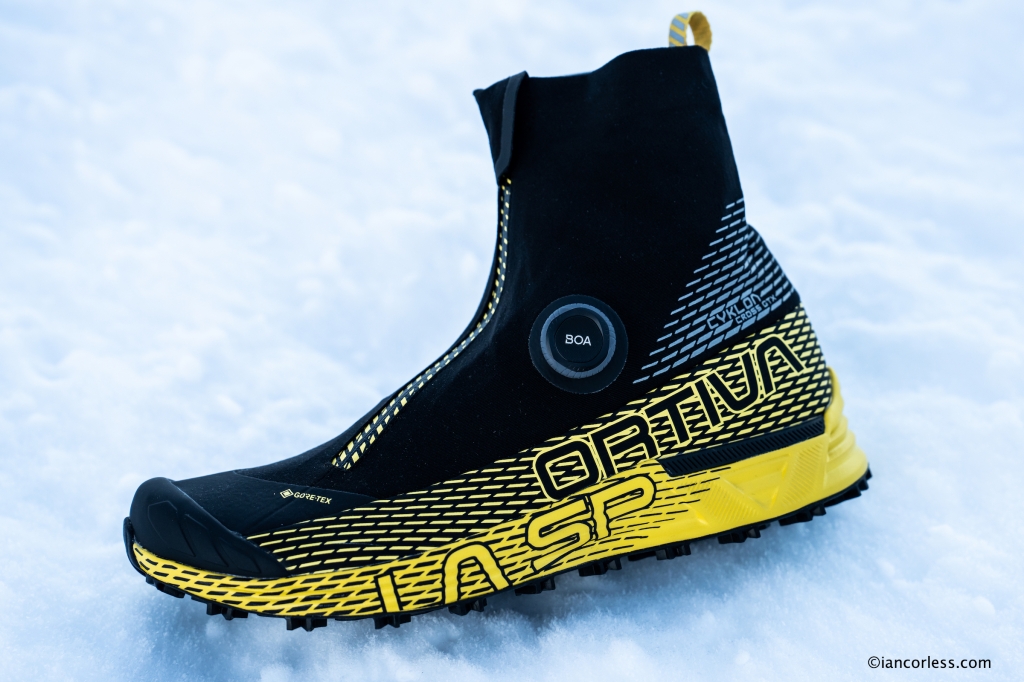
In simple terms and for ease of clarification, imagine a Cyklon shoe wrapped in a water-repellent gaiter designed to keep snow, mud, ice, water, and other unwanted elements away from the foot.
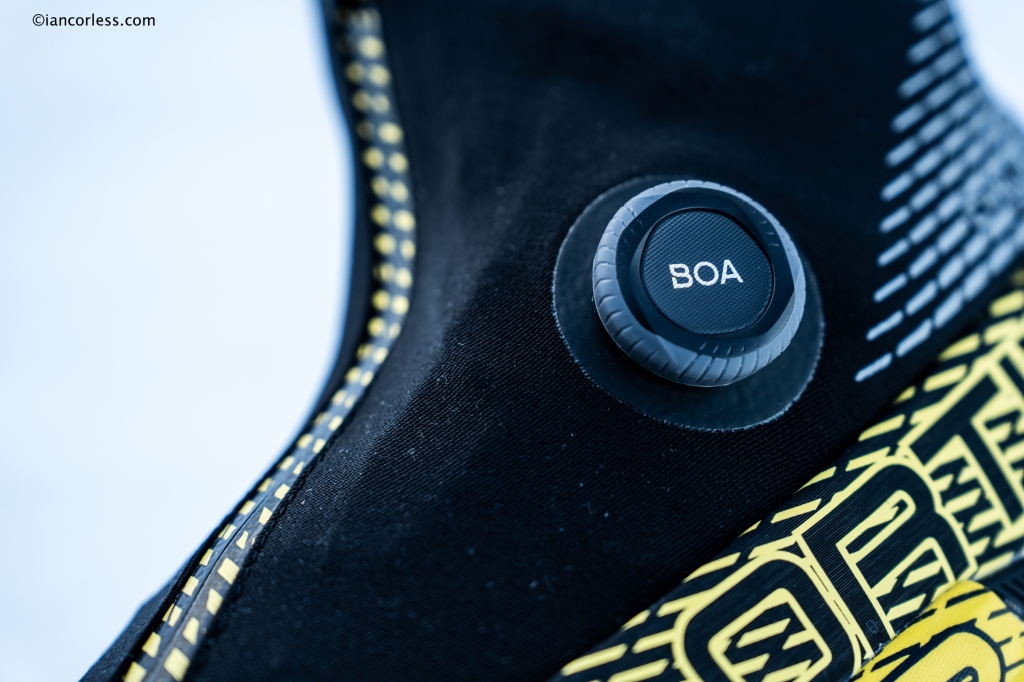
Add an external zip allowing ease of access and a BOA® Fit System to ‘dial’ how tight or loose the fit of the shoe is, and an aggressive grip made from FriXion® White you have arguably, one of ‘the’ ultimate off-road/ mountain shoes when conditions are harsh.
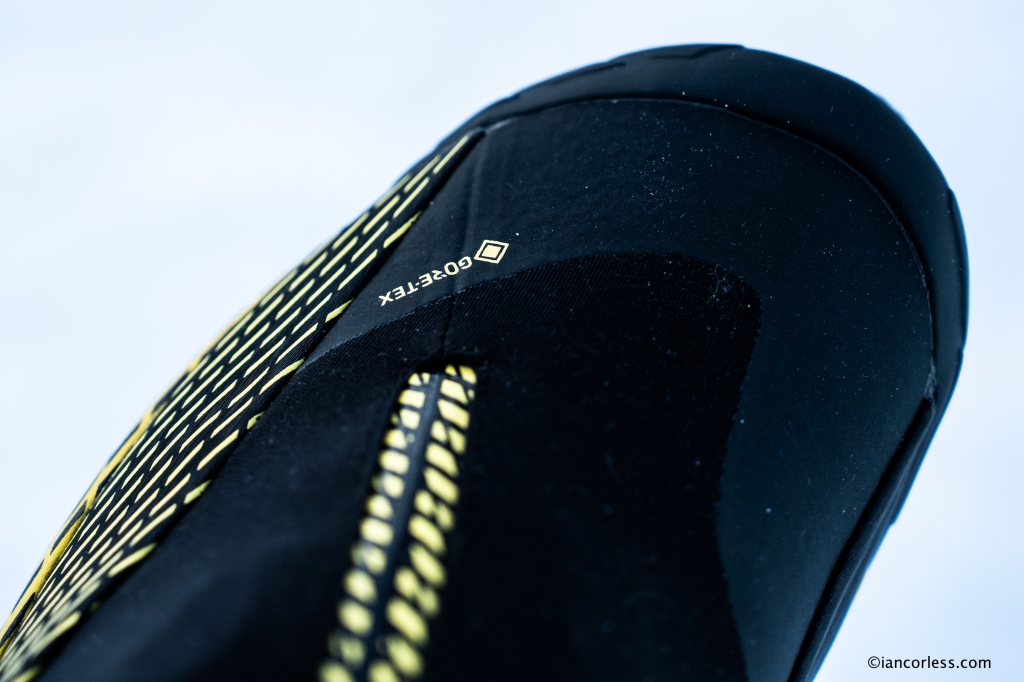
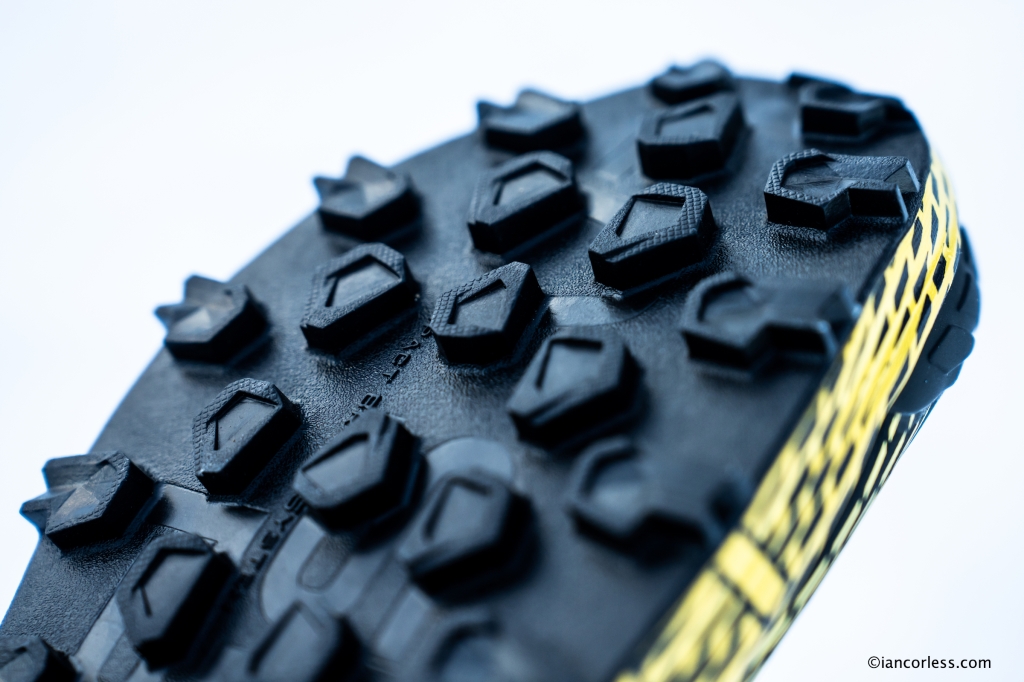
My first impressions were one of disappointment, why were there no metal studs on the outsole as La Sportiva have on the Blizzard GTX (here)? Of course, I understood why, you really limit the market and the use of the shoe with studs, but here in Norway, you ‘always’ need spikes from November through to March and even April.
However, having messaged Jono Wyatt at La Sportiva asking the above question, his reply was as I expected, “We need to appeal to a larger market to make the shoe viable, but this outsole is designed to be used with AT Grip spikes to enhance grip on snowy and icy terrain.”
Problem solved – the AT Grip HERE is a multi-purpose, adjustable spike, it can be added to the sole quickly, guaranteeing maximum safety and grip on any type of terrain and under any conditions.
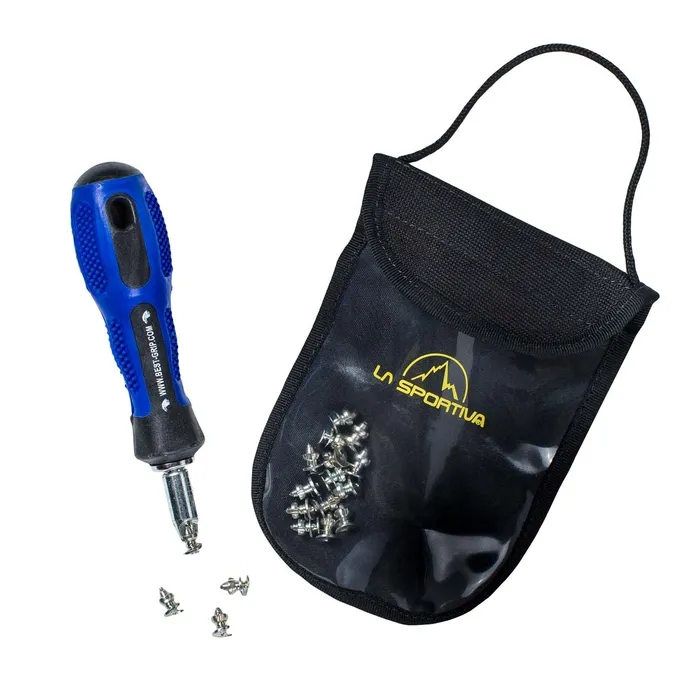
So, with my personal ‘needs’ covered re the spikes, I decided NOT to add the AT spikes and try the shoes in a multitude of terrain and as and when required, add micro-spikes (Nortec HERE for example) for ice conditions. Micro-spikes do provide more grip than studs, but the running experience is not as good as a specific winter stud shoe.
THE SHOE
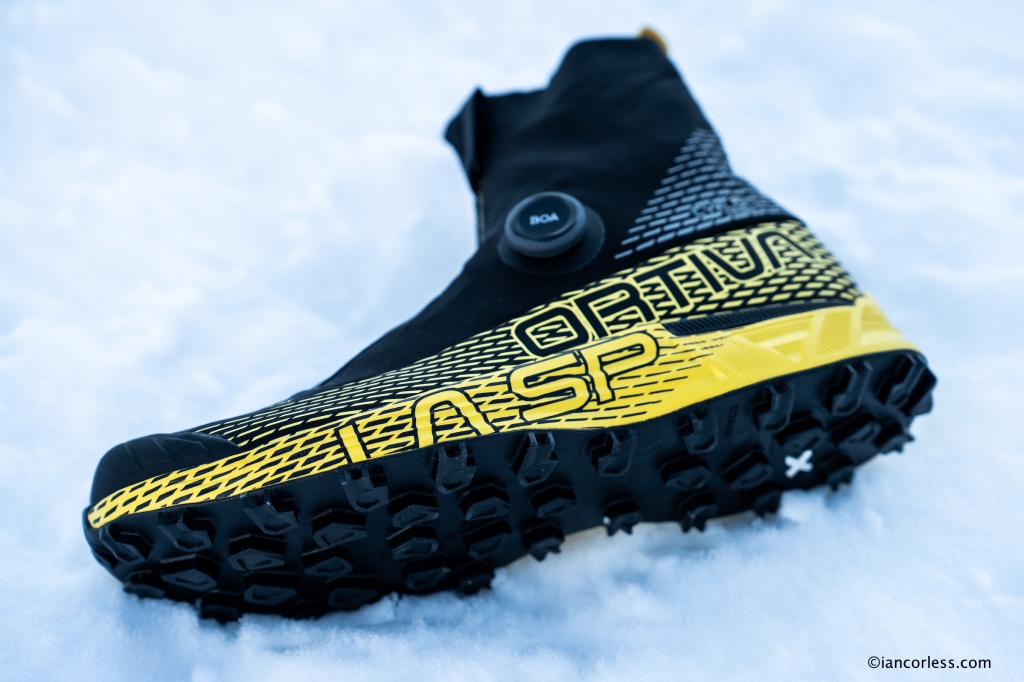
If you used the Cyklon, you are going to love the Cyklon Cross GTX. For me, it takes everything I loved about the original Cyklon and adds a level of refinement that makes this incarnation a pleasure to wear.
Notably, the BOA® Fit System is in a different place to the original Cyklon and now it is clear of the ankle – a problem area for some.
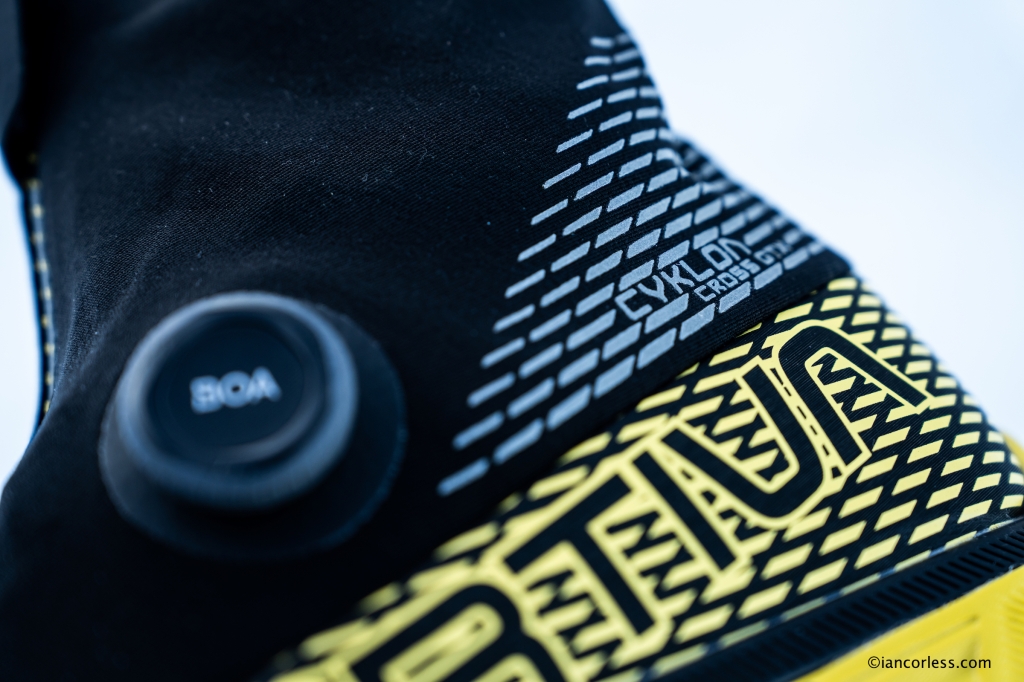
Sliding your foot into the boot and it immediately feels like wearing a pair of gloves, without the BOA® Fit System adjusted, they already feel snug. Engage the BOA and twist and the foot is held snug with the option to micro-adjust tighter (or looser) based on personal needs or conditions. Then pull up the zip. The whole foot and well above the ankle is enclosed in a wonderfully snug Gore-Tex protection against the elements. The plus being that shoe adjustment can be done, ‘on-the-go’ with gloves on at any time while out on a run. Perfect!
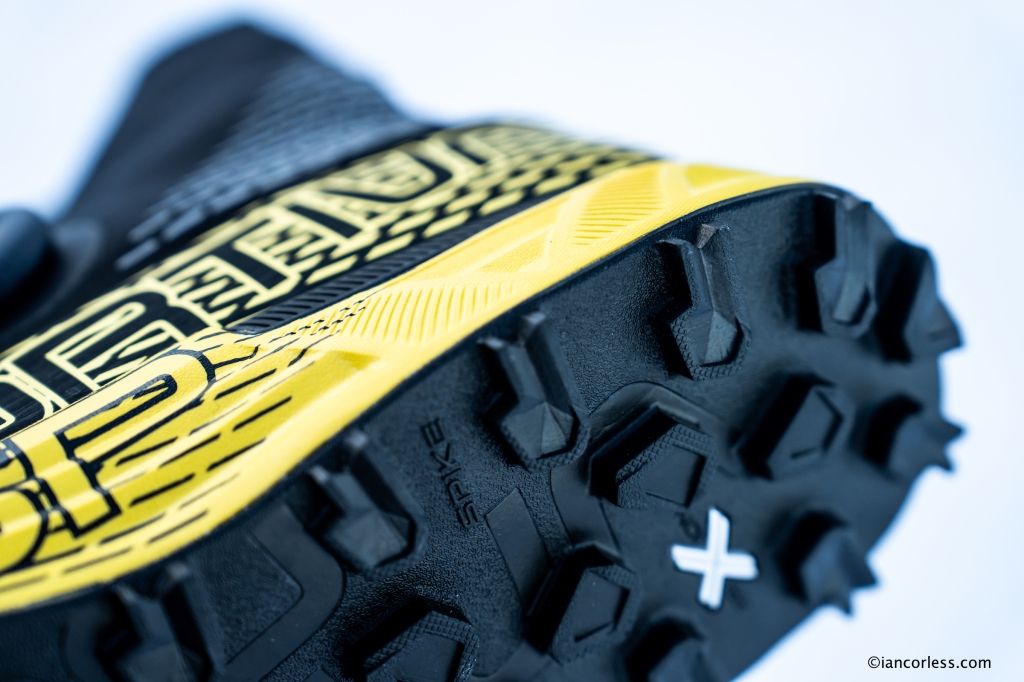
Comfort level is extremely high. In all honesty, it’s a game changer for winter conditions. I do recommend using a higher sock that extends beyond the top of the shoe, it increases comfort. I also recommend that you use merino.
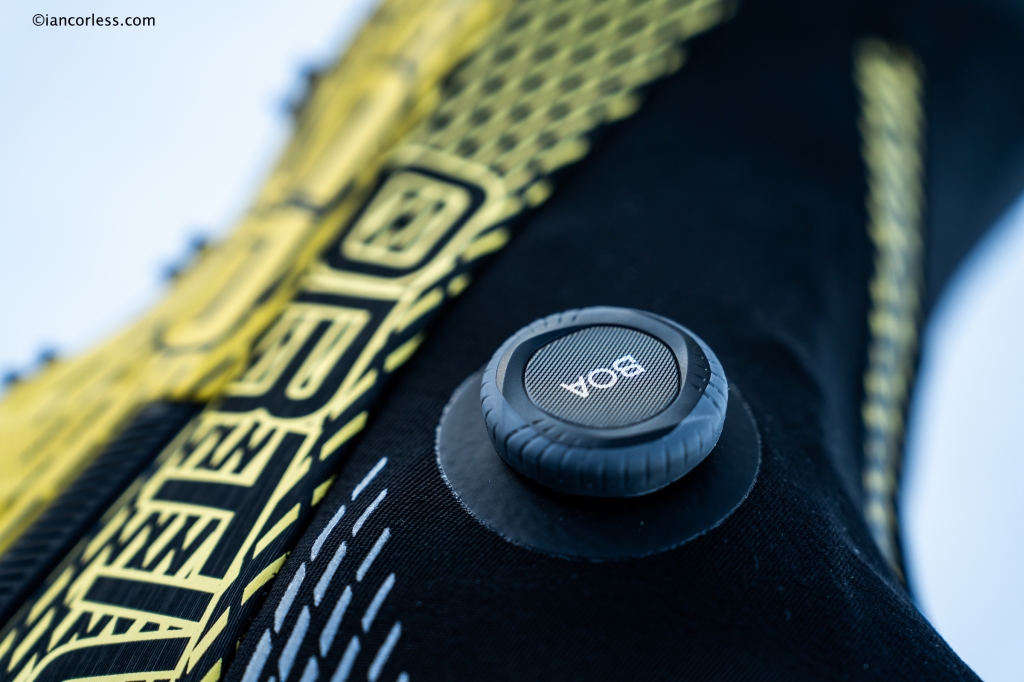
Many will say that there is no need for Gore-Tex in a running shoe. And usually, I would agree, especially for a shoe when water can enter below the ankle. Here though, the Cyklon Cross GTX comes much higher with a tight enclosure. It really does reduce what ‘can’ enter the shoe, and, in 3-months of winter running not once have my feet been wet. But go in water (deep) that extends beyond the top of the shoe and yes, water will enter, albeit much slower than any other shoe I have used. For clarity, I have run on many frozen ponds and puddles recently, often breaking through the ice to enter the water below, still no wet feet!
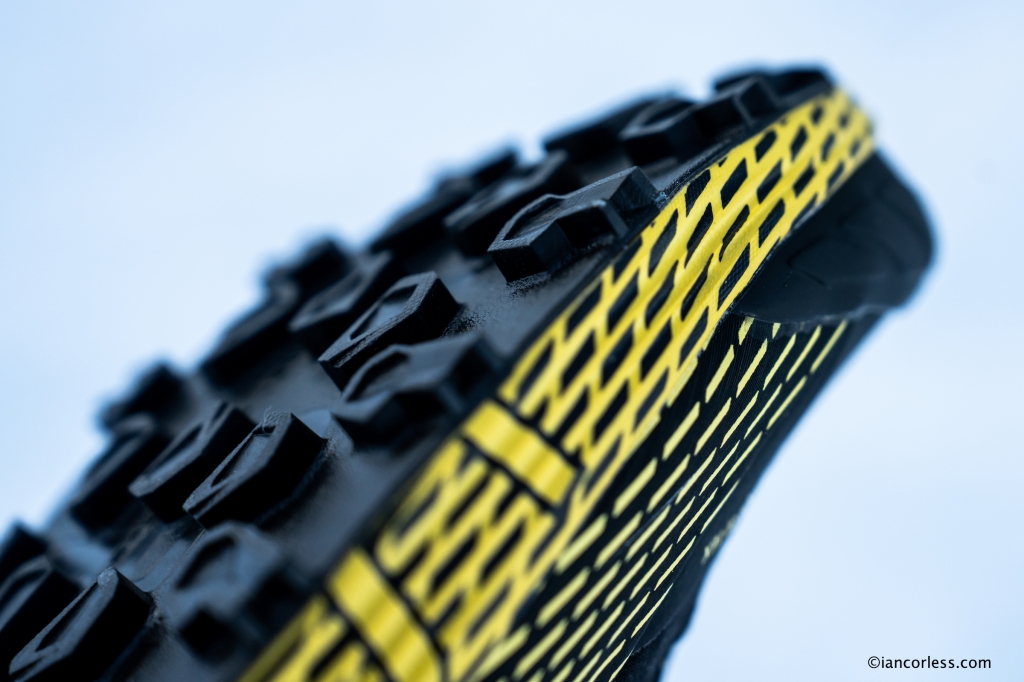
The grip is excellent on rock, mud, trees and all trail conditions, especially soft snow. Add micro-spikes for ice and you have a perfect ice shoe, albeit not as comfortable as a specific ice shoe, but on many occasions, I have gladly used this boot as an alternative, especially when encountering fresh snow with ice underneath, the boot offers more warmth and comfort.
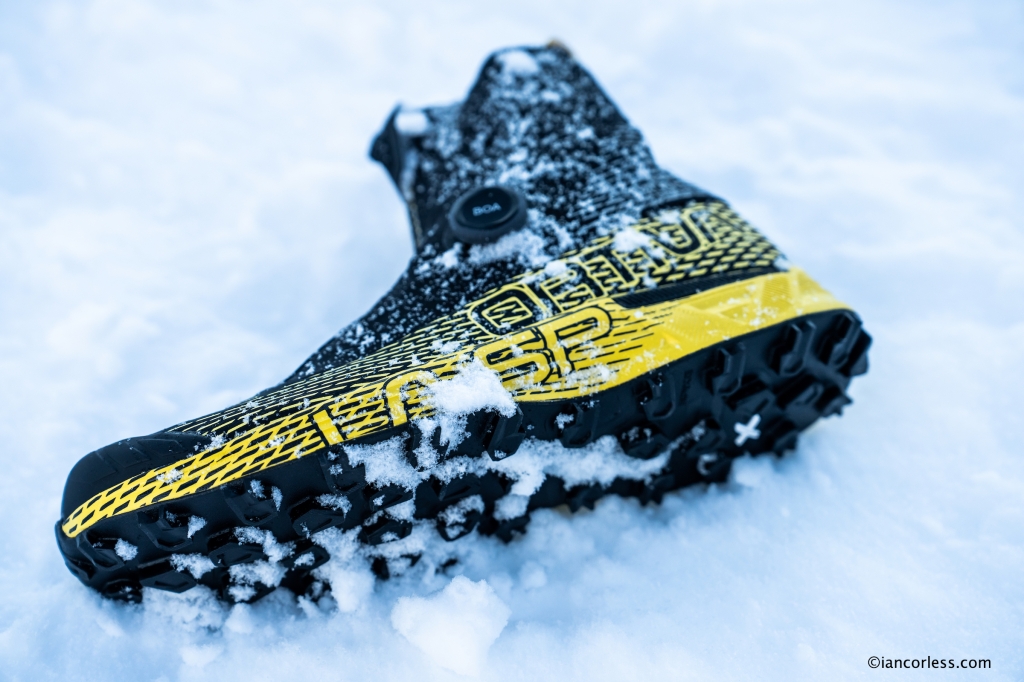
Feel for the ground is superb. They are cushioned but not too much. They combine comfort and excellent proprioception so that you feel at one with the terrain and always in control. Propulsive phase is superb and all-around comfort is magnificent. The Cyklon Cross GTX feels so good that I’d love to use them beyond the winter months, they would make excellent mountain shoes for all-year BUT I fear, they will be too warm in late spring and summer.
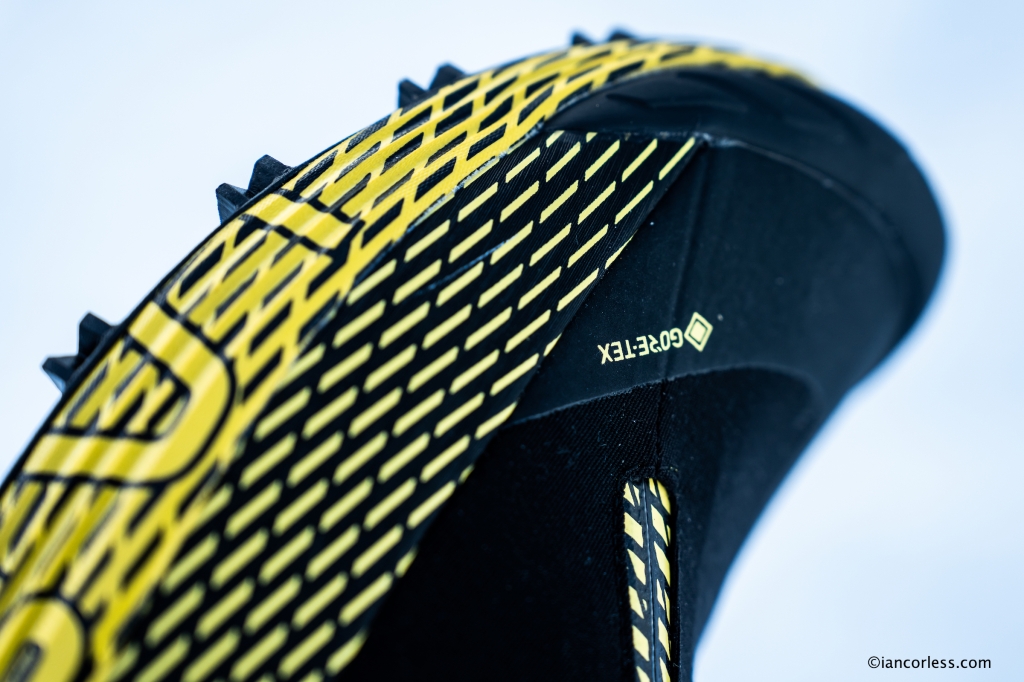
The toe bumper is robust and amazingly protective.
Despite the obvious appeals for winter and mountain running, the Cyklon Cross GTX is ideally placed for ‘fast-and-light’ alpinism when a normal shoe just wouldn’t cut it, think of Monte Rosa Skymarathon as a prime example.
A neutral fit I suggest you size up. I find that with La Sportiva I always need to do this; I am usually an EU 44 (UK9.5) but with La Sportiva I am in EU 45. Weight of an EU 45 is 382g which is quite incredible for a shoe with such solid build. Drop is 8mm.
Looks are awesome – the classic La Sportiva yellow/ black is stunning.
CONCLUSION
The La Sportiva Cyklon Cross GTX gets a 9.5/10 from me. Why not 10? Well, I’d love to see them ‘with’ a winter spike, but I fully understand why a spike is not standard. At least La Sportiva have thought of this with an appropriate outsole and the option of AT spikes.
Amazing foothold, amazing grip, warm, durable and dare I say, bullet proof. This is a shoe that makes me smile and want to run in harsh, cold, and tough conditions. BOA is the perfect fit system here and arguably it’s a best-case scenario allowing the user to adjust the shoe when running, especially when wearing gloves on.
The ride is predictably stable, firm, protective and suitable for any terrain and they excel in mud and snow. Ground feel is superb with adequate comfort.
They look awesome and surprisingly streamlined. When zipped up, they fit snug, some would even say tight, which only adds to the secure and warm feeling.
They are not cheap at 260 euros, but this is a specific bespoke shoe and if used as intended, they will last year-on-year for many winters.
Quite simply, one of the best, (if not the best) winter shoes I have ever used !
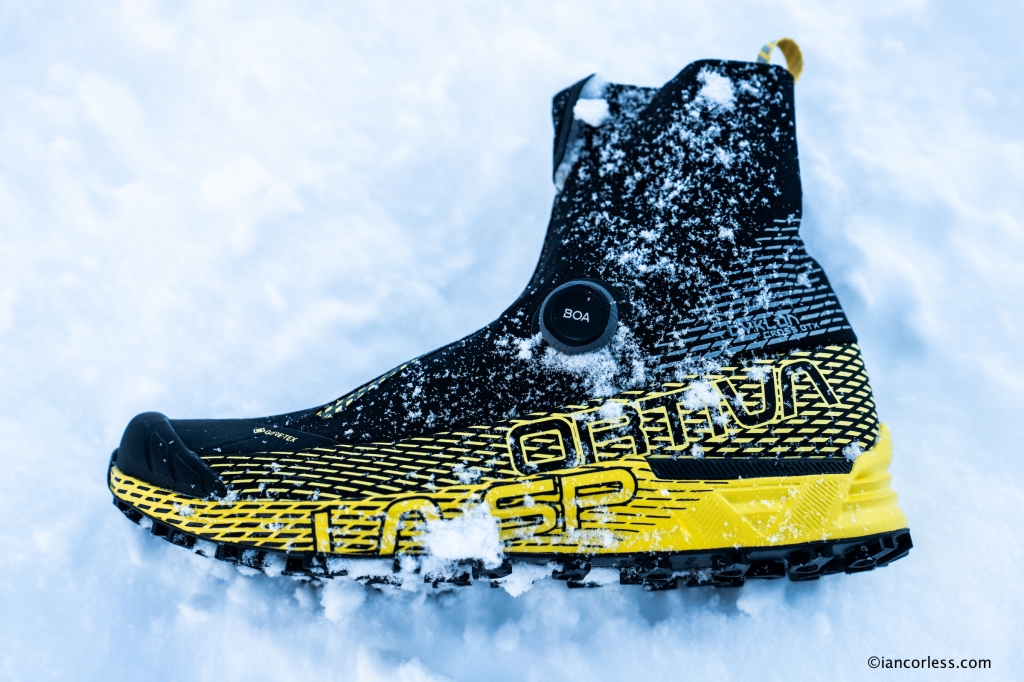
Follow on:
Instagram – @iancorlessphotography
Twitter – @talkultra
facebook.com/iancorlessphotography
Web – www.iancorless.com
Web – www.iancorlessphotography.com
Image sales –www.iancorless.photoshelter.com

